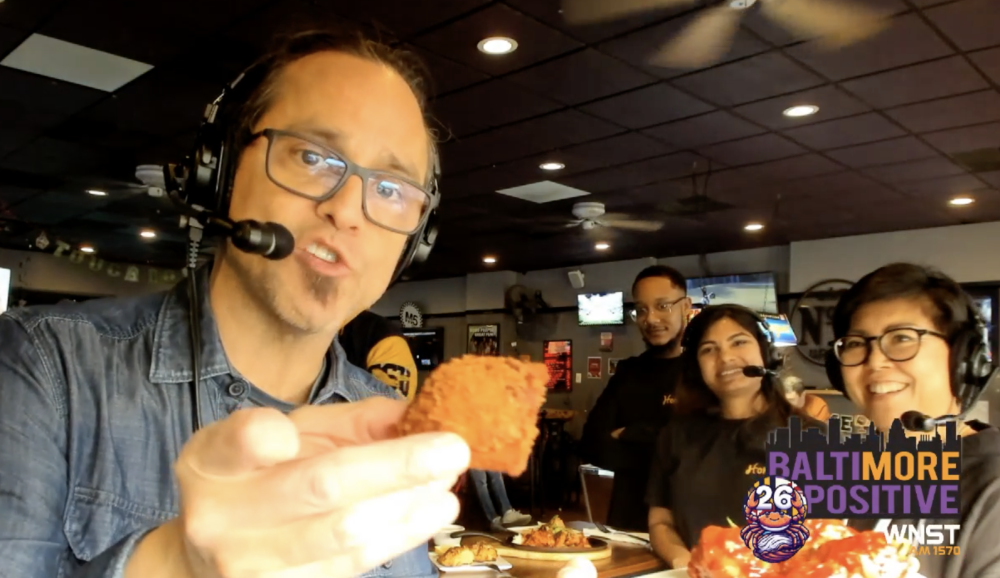Meeting Pat changed his life. She had two young boys, John and David, from a previous marriage to character actor David Orrick McDearmon, and Art was as smitten with the kids as he was their mother. She jumped into his life, travelling to away games and went from knowing nothing about football to being a passionate fan and was his rock during all of his setbacks. Art and Pat Modell were best friends – forever.
David Modell loves to tell the story of the first time he met Modell, the man who would become his father. When the fun-loving bachelor tried to impress his date’s young boys by showing them the proper way to light a match for his cigars, Pat was mortified and set him straight. And David, who was nine years old, became the son who gravitated to football (and cigars) while John gravitated toward the music and entertainment scene in Los Angeles. David learned the football business and worked in many roles with the Browns, beginning in 1975 as a 14-year old helping the grounds crew long before being named president once the team moved to Baltimore in 1996.
Modell’s whirlwind romance with the then-quite famous Breslin, who was friends with Lucille Ball, Walter Matthau, Jack Lemmon, and many 1960s television stars, coincided with the dawn of the new NFL, once the league merged with the fledgling American Football League after the New York Jets beat the Baltimore Colts in Super Bowl III. After being involved in the merger and allowing the Browns to move to the newly-titled AFC, or American Football Conference, made up primarily of teams from the AFL, he helped bridge the differences with Pittsburgh and the then-Baltimore Colts. At the time of the merger, Modell was the president of the NFL. He and his partners had been calling the AFL an inferior product for years.
Despite the memo never being received by Al Davis, it was imperative that the NFL and AFL get along. And it was Modell who needed to be a part of helping reinvent football and move it forward. Professional football needed to put an end to the back-room brawling that defined the hyper-inflated salary battles between the two leagues for talent, who were beginning to unify and create a collective bargaining group.
With Modell’s background on Madison Avenue, he always believed the growth of the sport came back to television and the quality and integrity of the game. It was what he knew best and his instincts, along with Rozelle’s vision as commissioner, helped the NFL create Monday Night Football. All of its true growth on the revenue side has been in television and media, where Modell shined and always was a mainstay on those vital committees that grew revenue for the league for three decades. Art knew show business.

His era in football can be defined in many ways, but he was proudest of his commitment to fairness and generosity.
Modell was proud of his devotion to Ernie Davis, the first African-American to win the Heisman Trophy and the first-round draft pick of the 1962 Cleveland Browns. Even though Jim Brown was already with the team and in his prime, Modell used the No. 1 overall pick on Davis, hoping to have a double-back attack that would punish NFL defenders. Instead, Davis was diagnosed with leukemia in the spring, and Modell flew him to hospitals all across the United States trying to find a cure. Davis died in 1963 and Modell was devastated.
Modell’s commitment to his players and his love of his players was unheard of in the modern era of pro sports, where many athletes never even meet the owner of their franchise. Modell was an outlier, treating many players like family for life, including many ex-Cleveland Browns who were put in awfully uncomfortable situations after the franchise relocated in Baltimore.
But it was his bold business sense and grand plans in the infancy of the NFL that clearly makes him a sports visionary and icon. It’s why he played doubleheader football games on Thanksgiving, a day when ticket buyers were off and one that married well with turkey and family. In 1970, Modell with Rozelle and ABC television executive Roone Arledge launched Monday Night Football, with the Browns hosting Joe Namath in his first game with the Jets after winning Super Bowl III. It was the first big game after the AFL-NFL merger. He not only orchestrated the television contracts, he was also instrumental in running the NFL, and his teams were very good. The 1964 championship was historic, but the Browns also got to the big game in 1965, 1968 and 1969 before losing the championship in the final game. Art understood early that only one team wins its final game each year.
The 1970s were a futile attempt to keep pace with the Pittsburgh Steelers in the AFC Central division and powerful non-division teams like Don Shula’s Miami Dolphins and later John Madden’s Oakland Raiders. However, in the 1980s, Modell’s teams were always on the cusp of greatness with quarterbacks Brian Sipe and Bernie Kosar, suffering all of the horrific losses to John Elway and the Denver Broncos that Ozzie Newsome can recount second by second. His signature camel hair coat and his outdoor seat at Cleveland Municipal Stadium made him one of the faces of ownership in the NFL. He was a spokesman for the game and liked talking to the media and joking with sports writers. He was proud that he was a hands-on owner and ran his business and cared just like the fans. Just like the fan he was of his New York Giants in the 1950s.



























